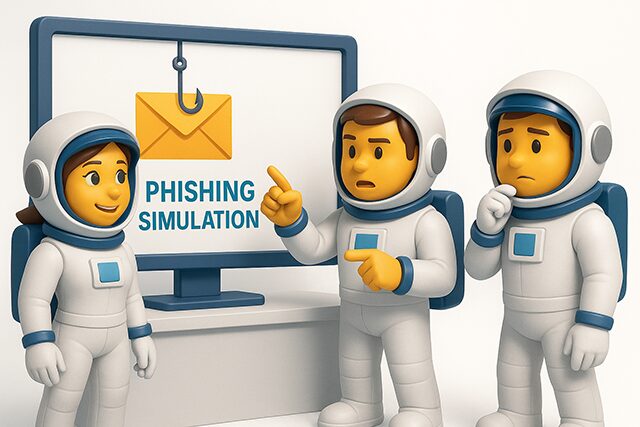How to Prevent Phishing Attacks: A Technical Professional’s Guide

If you’re looking for practical ways to prevent phishing attacks in your organization, you’re not alone. The most convincing phishing email I’ve seen fooled even our CISO. It arrived on a Tuesday morning, perfectly mimicking our payroll provider’s notification system, complete with legitimate-looking headers and our company’s exact formatting. Within minutes, three senior managers had clicked the link.
That incident taught me a crucial lesson to effectively prevent phishing attacks, we need more than just security awareness training. While educating users remains important, today’s sophisticated threats demand a multi-layered defense strategy. This guide will show you exactly how to prevent phishing attacks through technical controls, advanced detection systems, and strategic implementations that actually work. Whether you’re protecting a small business or enterprise network, these proven methods will help you build defenses that stop phishing threats before they reach your users inboxes.
Table of Contents
The Reality of Modern Phishing Attack Prevention
Every day, US organizations face an average of 1,185 phishing attacks, with business email compromise (BEC) incidents costing American companies $2.4 billion last year alone according to the FBI’s Internet Crime Complaint Center (IC3). While user training remains crucial, relying solely on human vigilance is like building a fortress with paper walls. Effective phishing protection methods combine advanced technical controls, intelligent detection systems, and strategic user education.
This guide provides actionable steps to implement robust anti-phishing solutions across your organization. Whether you’re securing a 50-person startup or a 5,000-employee enterprise, these phishing attack prevention strategies will significantly reduce your vulnerability to email-based threats. As phishing represents one of the most common attack vectors in the broader landscape of types of cyber attacks threatening businesses today, mastering these defenses is crucial for any security professional.
Technical Email Security Configurations: Your First Line of Defense
Implementing DMARC, SPF, and DKIM
The foundation of phishing attack prevention starts with proper email authentication. Here’s how to configure these critical protocols:
SPF (Sender Policy Framework):
v=spf1 include:_spf.google.com include:mailgun.org -allThis record tells receiving servers which IP addresses can legitimately send email for your domain. The -all directive instructs servers to reject emails from unauthorized sources a crucial element in phishing protection methods.
DKIM (DomainKeys Identified Mail): Generate a 2048-bit key pair and add the public key to your DNS:
default._domainkey.yourdomain.com TXT "v=DKIM1; k=rsa; p=MIGfMA0GCS..."DMARC (Domain-based Message Authentication): Start with a monitoring policy:
v=DMARC1; p=none; rua=mailto:dmarc@yourdomain.com; pct=100After analyzing reports for 30 days, gradually increase enforcement:
p=quarantine; pct=25(quarantine 25% of failing emails)p=quarantine; pct=100(quarantine all failing emails)p=reject; pct=100(reject all failing emails)
Advanced Email Gateway Configuration
Modern email security best practices require sophisticated gateway rules. Configure your secure email gateway (SEG) with these phishing attack prevention settings:
URL Rewriting and Sandboxing:
- Enable time-of-click protection for all URLs
- Implement URL reputation checking with real-time threat intelligence
- Configure automatic sandboxing for suspicious attachments
Impersonation Protection:
- Create VIP lists for executives and finance team members
- Enable display name spoofing detection
- Configure cousin domain detection (e.g., “arnazon.com” vs “amazon.com”)
Content Analysis Rules: Create custom rules targeting common phishing indicators:
- Urgent language combined with financial requests
- Mismatched sender names and email addresses
- External emails claiming to be internal communications
Deploying Advanced Phishing Detection Tools
Machine Learning-Based Detection
After dealing with our third BEC incident, I finally convinced management to invest in ML-powered anti-phishing solutions. Here’s what actually moves the needle:
Natural Language Processing (NLP) Analysis: Modern tools analyze email content for:
- Emotional manipulation patterns
- Urgency indicators
- Authority exploitation
- Social proof tactics
These psychological manipulation techniques are deeply explored in our guide on social engineering attacks, which reveals how attackers exploit human psychology to bypass technical controls.
Computer Vision for Image-Based Phishing: Configure your phishing protection methods to include:
- Logo detection and comparison
- QR code analysis
- Screenshot text extraction
API-Based Email Security Integration
Implement API-based tools that work within your email platform:
# Example: Microsoft Graph API integration for real-time scanning
def analyze_email(message_id):
headers = message.get_headers()
# Check authentication results
spf_result = headers.get('Authentication-Results-SPF')
dkim_result = headers.get('Authentication-Results-DKIM')
dmarc_result = headers.get('Authentication-Results-DMARC')
# Analyze sender reputation
sender_domain = extract_domain(message.sender)
reputation_score = check_reputation(sender_domain)
# Content analysis
risk_score = ml_model.analyze(
subject=message.subject,
body=message.body,
attachments=message.attachments
)
return {
'risk_score': risk_score,
'authentication': {
'spf': spf_result,
'dkim': dkim_result,
'dmarc': dmarc_result
},
'reputation': reputation_score
}Building an Effective Phishing Awareness Training Program
Segmented Training Approach
How to prevent phishing attacks through targeted education:
Executive Training (C-Suite and VPs):
- Focus on BEC and whaling attacks
- Emphasize wire transfer fraud scenarios
- Include examples from similar organizations
Finance Team Training:
- Invoice fraud detection techniques
- Vendor verification procedures
- Payment change request protocols
IT Staff Training:
- Advanced threat identification
- Incident response procedures
- Phishing infrastructure analysis
General Staff Training:
- Basic phishing identification
- Reporting procedures
- Password hygiene
Phishing Simulation Best Practices
Here’s what I wish I’d known before implementing our first phishing simulation:
Simulation Planning:
- Start with low-sophistication campaigns
- Gradually increase complexity
- Mirror real-world threats your industry faces
- Time simulations strategically (avoid high-stress periods)
Metrics That Matter:
- Click rate (target: <5%)
- Report rate (target: >70%)
- Time to report (target: <10 minutes)
- Repeat offender percentage
Effective Simulation Templates:
- Package delivery notifications (especially during holidays)
- IT system updates
- HR policy changes
- Tax season scams (W-2 requests, IRS notifications)
Business Email Compromise Prevention Strategies
BEC attacks cost US businesses more than any other type of cybercrime. Implement these phishing attack prevention controls:
Financial Control Implementation
Dual Authorization Requirements:
if (wire_transfer.amount > 10000) {
require_approval_from(authorized_approver_list);
require_verification_via(out_of_band_channel);
}Vendor Verification Procedures:
- Maintain a verified vendor contact database
- Require voice verification for payment changes
- Implement 48-hour cooling period for new payment instructions
- Use code words for sensitive transactions
Email Banner Implementation
Configure warning banners for high-risk scenarios:
<!-- External sender banner -->
<div style="background:#FFF3CD;border:1px solid #FFEEBA;padding:10px;">
⚠️ EXTERNAL EMAIL: This email originated outside the organization.
Verify requests for sensitive information or money transfers.
</div>
<!-- Similar domain warning -->
<div style="background:#F8D7DA;border:1px solid #F5C6CB;padding:10px;">
🚨 WARNING: This sender's domain is similar to but different from
legitimate company domains. Verify sender identity before proceeding.
</div>Incident Response for Successful Phishing Attacks
Despite robust email security best practices, some phishing emails will inevitably succeed. Your response in the first hour determines the impact.
Immediate Response Checklist
0-15 Minutes:
- Disable compromised accounts
- Reset passwords for affected users
- Revoke all active sessions
- Block malicious URLs at firewall/proxy
15-30 Minutes:
- Search email logs for other recipients
- Initiate enterprise-wide password reset if needed
- Check for lateral movement indicators
- Notify security team and management
30-60 Minutes:
- Analyze phishing email for IOCs
- Update email filters with new indicators
- Send organization-wide alert
- Begin forensic investigation
Post-Incident Improvements
Every successful phishing attack provides valuable data for improving your phishing protection methods:
- Update training materials with the real example
- Adjust email gateway rules
- Refine detection algorithms
- Strengthen vulnerable processes

Advanced Technical Controls and Anti-Phishing Solutions
Browser Isolation Technology
Implement remote browser isolation (RBI) for high-risk users:
- Finance team members
- Executive assistants
- HR personnel with access to personal data
RBI renders web content in isolated containers, preventing malware execution even if users click malicious links. This technology becomes even more critical when combined with zero trust security principles, ensuring no implicit trust exists in your network architecture.
Zero-Hour Phishing Protection
Configure your anti-phishing solutions for unknown threats:
URL Reputation Services:
{
"url_analysis": {
"real_time_checking": true,
"reputation_threshold": 85,
"age_check_days": 30,
"ssl_verification": true,
"redirect_chain_analysis": true
}
}Attachment Detonation:
- Configure sandboxing for all executable files
- Enable macro analysis for Office documents
- Implement PDF JavaScript extraction
- Set up password-protected file analysis
Integration with SIEM and SOAR
Effective phishing attack prevention requires automated response:
# SOAR Playbook Example
phishing_response:
triggers:
- user_reported_phish
- gateway_high_risk_detection
- multiple_users_affected
actions:
- block_sender_domain
- quarantine_all_instances
- disable_affected_accounts
- create_incident_ticket
- notify_security_team
- initiate_forensic_collection
Measuring and Improving Your Phishing Defense
Key Performance Indicators
Track these metrics to evaluate how to prevent phishing attacks effectively:
Technical Metrics:
- Email authentication pass rate (target: >95%)
- False positive rate (target: <0.1%)
- Time to detect (target: <5 minutes)
- Auto-remediation rate (target: >80%)
Human Metrics:
- Phishing report accuracy (target: >90%)
- Training completion rate (target: 100%)
- Simulation improvement rate (target: 20% quarterly)
Continuous Improvement Framework
- Weekly Reviews:
- Analyze blocked phishing attempts
- Review user-reported emails
- Update threat intelligence feeds
- Monthly Assessments:
- Conduct phishing simulations
- Review and update email rules
- Analyze incident response times
- Quarterly Evaluations:
- Comprehensive security awareness training
- Email security tool effectiveness review
- Policy and procedure updates
Industry-Specific Considerations
Healthcare Sector
Healthcare organizations face unique phishing challenges:
- COVID-19 vaccine phishing scams
- Medicare/Medicaid fraud attempts
- Patient data ransom threats
Implement HIPAA-compliant phishing awareness training focusing on:
- Protected health information (PHI) handling
- Medical device security
- Telehealth platform verification
Financial Services
Financial institutions require enhanced phishing protection methods:
- ACH fraud prevention
- Wire transfer verification
- Customer impersonation detection
Configure anti-phishing solutions with:
- Transaction pattern analysis
- Multi-factor authentication for all transfers
- Real-time fraud detection integration
Manufacturing and Critical Infrastructure
Industrial control system (ICS) environments need specialized email security best practices:
- Air-gapped network protection
- Supply chain communication verification
- Operational technology (OT) awareness
Implementation Roadmap
Phase 1: Foundation (Weeks 1-4)
- Deploy DMARC, SPF, and DKIM
- Configure basic email gateway rules
- Establish incident response procedures
Phase 2: Enhancement (Weeks 5-8)
- Implement advanced detection tools
- Launch phishing awareness training
- Deploy initial phishing simulations
Phase 3: Optimization (Weeks 9-12)
- Fine-tune detection algorithms
- Implement SOAR integration
- Establish continuous improvement processes
Phase 4: Maturity (Ongoing)
- Regular simulation campaigns
- Advanced threat hunting
- Predictive analytics implementation
Conclusion: Building Resilient Phishing Defenses
Effective phishing attack prevention requires a multi-layered approach combining technical controls, user education, and continuous improvement. By implementing these phishing protection methods, you create a robust defense that adapts to evolving threats.
Remember, the goal isn’t to achieve perfect security it’s to make your organization a harder target than your competitors. Start with email authentication, add advanced detection tools, train your users effectively, and maintain vigilance through regular testing and updates.
The next time a sophisticated phishing email targets your organization, you’ll be ready. Your technical controls will catch most threats automatically, your users will recognize and report the rest, and your incident response team will minimize any impact. That’s how to prevent phishing attacks in today’s threat landscape through comprehensive, technical, and human-centered defense.
As you strengthen your phishing defenses, remember they’re part of a comprehensive cyber attack defense strategy outlined in our complete guide to types of cyber attacks. Understanding the psychology behind these attacks enhances your defense explore our deep dive into social engineering attacks to strengthen the human element of your security. For organizations ready to take security to the next level, implementing a zero trust architecture adds another crucial layer of phishing protection.
What’s your most effective phishing defense strategy? Share your experiences and help other IT professionals strengthen their email security.







